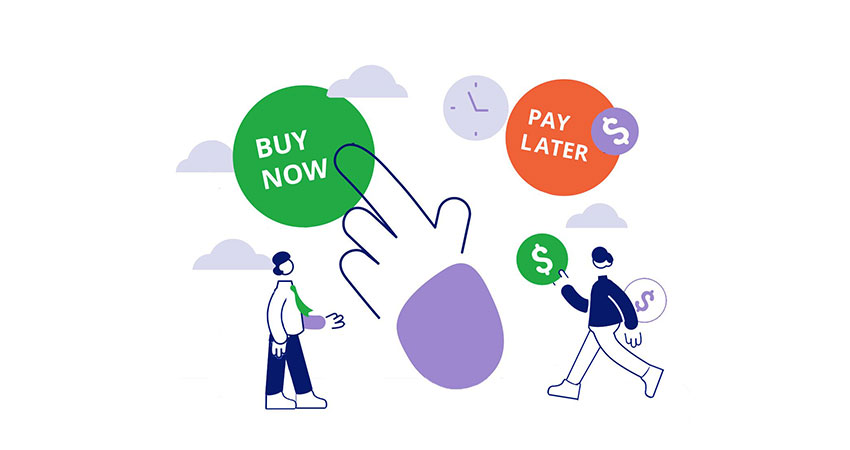Grim news about spiraling inflation is coming at us from all sides. Higher prices for raw materials are having a knock-on effect in the wider economy, with producers increasingly forced to pass on higher input costs to buyers. With inflation rates in many countries at levels unseen in decades, consumers around the world are struggling to make ends meet.
All of these factors crimp discretionary spending, whether it’s replacing an outdated appliance, updating decor or buying the latest electronics.
As many consumers struggling with reduced buying power are discovering, alternative payment systems such as Buy Now, Pay Later can go some way to helping alleviate the pain of higher prices.
BNPL is an increasingly popular payment option. Unlike traditional credit card debt, BNPL loans usually incur neither interest charges nor fees, and few require hard credit checks.
BNPL lenders earn their money from retailers, which pay them a small percentage of the price of each purchase, an investment that pays off in the form of increased customer loyalty, higher sales and reduced credit risk.
Usage was already on the rise before 2020, particularly among Millennials and Gen Z. But it surged by orders of magnitude when the world was paralyzed by COVID-19, and shoppers shifted en masse to online purchasing.
Today, BNPL is omnipresent, a checkout option on thousands of ecommerce sites and brick-and-mortar stores. Providers such as Klarna, AfterPay and Affirm are becoming familiar names, while banks and credit card companies are launching their own versions of BNPL.
By 2025, the sector is expected to account for 5.3% of global ecommerce transaction value or $438 billion, according to a 2022 report by Worldpay. That’s up from 2.9% or $157 billion in 2021.
Why BNPL?
So, what impact has the rise in prices had on that growth trajectory? A positive one, at least so far.
This is in part because BNPL offers flexibility without extra cost. The ability to spread payments over time without racking up interest charges can allow a household to make a vital big-ticket purchase that otherwise would be beyond reach, particularly in a time of escalating prices.
There’s also a predictable payment structure over a set period, which can help consumers navigate tight periods without having to take out loans, tap savings or use credit cards.
Almost 60% of U.S. consumers polled by Credit Karma said inflation makes it more probable they will use BNPL. More than half of those who now do – 53% – put this down to necessity, while 45% said it would be their chosen payment method when funds were short.
Nor is BNPL usage reserved for big-ticket items. According to a survey from financial services consultancy RFI Global, more and more consumers are using installment payments to help them manage budgets strained by rising living costs. Fully one-third of consumers surveyed in Australia and the UK would be willing to use point-of-purchase lending for household bills, groceries and fuel.
One in 12 UK residents has used BNPL for basics such as food and toiletries in the past six months, according to a January poll by the charity Citizens Advice. Those who were younger, in debt or on benefits like unemployment are more than twice as likely to have done so than have the overall population, it found.
Helping Consumers Navigate Stormy Waters
But while it can help, BNPL is not a panacea. Both experts and providers caution that the number of people making late payments – and thus risking fees and/or interest charges – is bound to climb if price rises continue unchecked.
A 2020 study by financial website The Ascent showed that, of Americans who have used a BNPL system, nearly half – 45% – did so to buy items that were beyond their means.
Further, nearly 70% of BNPL consumers said they spent more than they would have if they paid entirely upfront, according to LendingTree.
Households deemed financially vulnerable are almost four times as likely to use BNPL as those in good financial shape, according to a U.S. survey by the Financial Health Network. And in a poll of UK consumers, more than half of young adult respondents said the rising cost of living made them less confident of making their BNPL payments.
Many BNPL providers are turning to technology to assess and mitigate default risks. Tools are evolving that will allow installment lenders to quickly conduct a “soft” check into past shopping and borrowing behavior that doesn’t impact their credit score. BNPL aggregators can offer a suitability score based on a wider dataset, helping lenders decide within seconds whether a shopper is a good or bad risk.
Experts are mixed on just how long inflation will weigh on personal finances, but most see little sign of relief in the near future. The economic impacts of COVID-19, supply chain disruptions and the Russian invasion of Ukraine are just a few of the global developments that could take a toll for quite some time to come.
In times like these, it is more important than ever that BNPL providers help merchants and customers make financially smart decisions. Companies should be upfront about the consequences of missed payments and defaults. Many lenders have other solutions to help customers avoid falling behind.
Klarna, for example, offers shoppers tips on personal finances while Afterpay has a hardship policy that invites customers to get in touch to talk through options like a revised repayment plan if they face difficulties.
With retail prices soaring worldwide, it’s more important than ever that BNPL acts as a force for good in consumer lives, helping them navigate difficult periods without undue financial risks.
Natasha Zurnamer is Co-Founder and CEO of Optty

